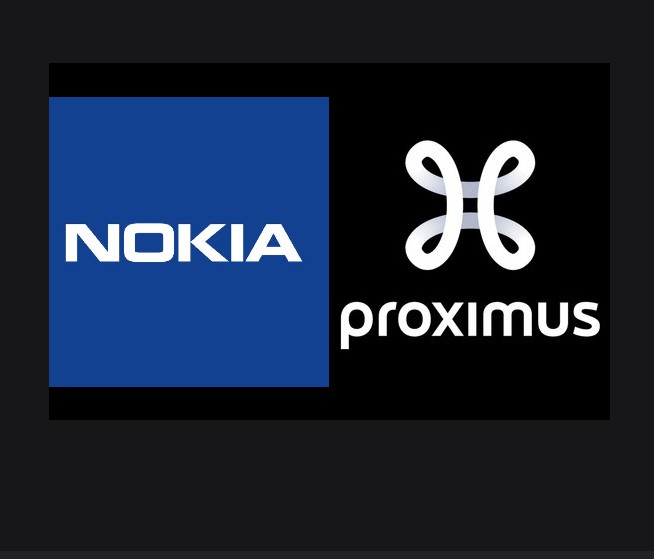First-ever 25G PON live deployment makes Proximus fiber network fastest in the world
The technology operates on the same fiber network equipment deployed today
Proximus is accelerating build-out of Belgium’s leading high capacity, open fiber network
Nokia and Proximus turned on the world’s fastest fiber access network today at a media event in Antwerp attended by the Belgian Minister of Telecommunications, the Mayor of Antwerp and executives and engineers from the two companies.
Operating over existing fiber and Nokia equipment deployed in the Proximus network, the first-ever 25G PON live network connects the Havenhuis building in the Port of Antwerp with the Proximus central office in the middle of the city. The network speed exceeded 20 Gigabits per second making it the fastest fiber network in the world.
Proximus is the leading provider of fixed broadband networks in Belgium with 45.9% market share. The operator is accelerating the move to fiber, adding 10% coverage each year and is on target to reach at least 70% of homes and business by 2028. As part of its inspire 2022 vision, it is creating a high capacity open network which will be available to all operators, eliminating the need for fiber overbuild.
Rupert Wood, Research Director for Fiber Networks at Analysys Mason, said today’s 25G PON achievement demonstrates the unlimited potential of fiber.
“This next evolution in fiber technology will provide enterprises with greater than 10 Gbs connectivity and the capacity needed to support 5G transport along with future next generation services such as massive scale Virtual Reality and real time digital twins,” said Rupert Wood.
Proximus CEO Guillaume Boutin said the activation of the first 25G PON network worldwide shapes our bold ambition to be a trendsetter, to become a reference operator in Europe and, why not, across the globe.
“Together with Nokia, we have achieved a technological leap forward that will become a key enabler of the digital and economy and society that we stand for. Today’s announcement is also an occasion to stand still and look at the pace at which we connect the citizens of Antwerp to the technology of the future,” said Guillaume Boutin.
Thanks to huge investments, Guillaume Boutin said the company is realising an acceleration that is unseen in Europe, and I am convinced this will be crucial to remain competitive as a company but also for Antwerp as a city and for our entire economy.
Nokia President Network Infrastructure Federico Guillén said 10 years ago both companies launched the technology which enabled a switch to HD TV.
“Today we make history again with a network that is 200x faster. We are proud to support Proximus in enabling the world’s first 25G PON network, powered by Nokia’s Quillion chipset, which supports three generations of PON technologies,” said Federico Guillén.
Quillion has been adopted by more than 100 operators since its launch last year and all operators deploying the Quillion based GPON and XGS-PON solution today have the capabilities to easily evolve to 25G PON.”
Nokia’s 25G PON solution utilises the world’s first implementation of 25GS-PON technology and includes Lightspan access nodes, 25G/10G optical cards and fiber modems.
Nokia Lightspan FX and MX are high-capacity access nodes for massive scale fiber roll-outs. Usually located in telecom central office, they connect thousands of users via optical fibre, aggregate their broadband traffic and send it deeper in the network. The fiber access nodes can support multiple fiber technologies including GPON, XGS-PON, 25GS-PON and Point-to-Point Ethernet to deliver l wide range of services with the best fit technology.
Nokia ONT (Optical Network Termination) devices, or fiber modems, are located at the user location. They terminate the optical fibre connection and delivers broadband services within the user premises or cell sites.
Resources





